Our eyes do not perform well underwater. We have problems processing images in this environment. Unprotected, they are exposed to contact with impurities that can irritate or even damage them. But would diving with eyes shut really make sense? Diving is not only pleasure derived from a controlled neutral buoyancy, but also the opportunity to experience a completely different, sometimes hostile world. The history of diving is long. In fact, we never parted from the water. This environment guarantees us safety even before we learn how to breathe the air. Curiosity is certainly one of the most important reasons which pushes people underwater; maybe another is the desire to experience the reception specific soundproofing that remains only in the subconscious mind?
History
Unfortunately, the human eye is not in a comfortable position when it comes in contact with water. Therefore, as early as around 1300, Persian divers learned to make diving goggles with lenses from the polished outer layer of the shell of a sea turtle. It can be assumed that the history and evolution of diving equipment begin here, with the largest revolution associated with its development taking place only in the second half of the 19th century and the beginning of the 20th century.
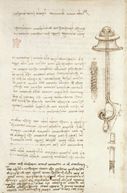
Of course, the most important consideration for the diver is the ability to breathe freely underwater, nevertheless, the necessity of exploration with the use of sight is indisputable. Thanks to his extraordinary creativity, Leonardo da Vinci had an idea in the 15th century for a device for breathing underwater, which he described in the Codex Arundel (Arundel Code, British Library, London), he also included a diving mask as an element necessary for the effective study of the underwater world.
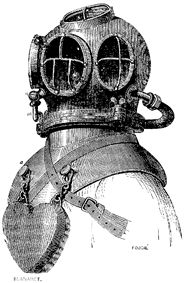
During the World Exhibitions in London (1851) and Paris (1855) inventions useful in underwater escapades gained recognition and enjoyed great popularity. Heinke was awarded the medal on the first of these. In turn, Joseph-Martin Cabirol (1799−1874), who in 1855 patented a new model of standard diving attire, won the silver medal at the Paris exhibition. The suit he designed was made of rubber canvas, and the helmet was equipped with an extremely innovative solution for the time, i.e. a tap for manual control of airflow, with which the diver could independently control the discharge of exhaled gases. A safety valve was installed in the tap to prevent water from entering the helmet. Until 1855, diving helmets were equipped with only three, usually around windows (front, left and right). The Cabirol’s helmet introduced the fourth porthole, located in the upper front of the helmet, allowing the diver to observe more.
23 years later, when Henry Fleuss (1851–1933) designed and built the first commercial rebreather (closed-circuit breathing device), he replaced a heavy metal helmet with a rubber mask and although it was still connected to the breathing apparatus, its lightness was widely appreciated, as was the freedom it gave the diver. Helmets, however, were not sidelined. Even more significantly, brothers Alphonse and Théodore Carmagnolle from Marseille in France patented in 1882 the first anthropomorphic suit ADS (Atmospheric Diving System – diving suit using atmospheric air).
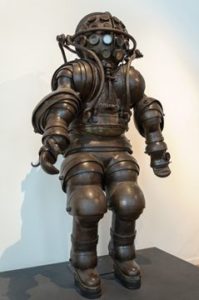
The so-called “hard suit” resembled a one-man, anthropomorphic submarine. It consisted of 22 ball-joints (despite the use of additional sealing materials, they were never completely watertight) and a helmet with 25 round, 2-inch (51 mm) glass ports for viewing. The ADS weighed 380 kg and never went beyond the testing phase. However, these developments continued, with projects still being developed, built and modified as they could apply to very deep and long dives. It was expected that they would eliminate most of the significant physiological hazards associated with high blood pressure and chemical changes at great depths. According to the inventors, the diver in ADS did not need decompression procedures or special gas mixtures, and thus the risk of decompression sickness, pressure injuries or nitrogen narcosis was negated. In fact, the diver did not even have to be an experienced swimmer.
In 1916, Riichi Watanabe and Kanezo Ohgushi invented, and two years later they patented “Peerless Respirator Ohgushi”, which pumps air from the surface or from a diver taken underwater tank with a capacity of 1000 liters. A valve mounted in the mouthpiece supplied air to masks (not a helmet!) above the diver’s nose and eyes. The gas flow was regulated by the strength and duration of the occlusion. The inventors obtained patents for their device in Japan, Great Britain (No. 1313 390), United States (No. 1333 601), France (No. 466,716) and in Italy. The breathing apparatus was successfully used for fishing and rescue work and by the Japanese underwater unit until the end of the Pacific War.
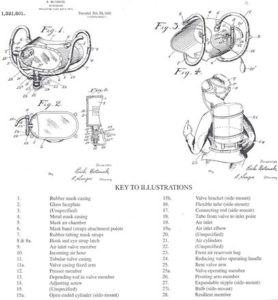
First Polish Signs
Although Poles are not visible in the history of diving, careful study of information allows us to discover evidence of their participation. From the archival documents of the first French World Exhibition (1855), we know that among the exhibitors there were only five manufacturers of diving equipment: three English (SIEBE, HEINKE and TYLER) and two French (CABIROL and ERNOUX). The most significant for us will be the company “C.E. HEINKE & Co.”, whose history dates back a 100 years earlier, when in 1806 Gotthilf Frederick Heinke, born in 1786 in Międzyrzecz (died in 1871 in London), emigrated to England. There, six years later, he married Sara Smith, with whom he had 5 children: John William (born in 1816), Charles Edwin (born in 1818 – he will later be “CE” in “CE HEINKE & Co.” ), Gotthilf Henry (born in 1820), Elizabeth Rosina (born in 1824) and Sarah Juliana (born in 1826).
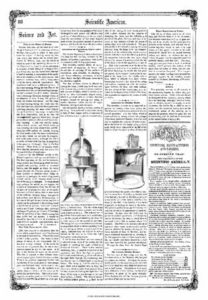
On 1st April 1869, Charles Edwin died at the age of 50, and his older brother John William passed away the following year. Frederick William Heinke (son of John William) with a colleague John Davis, founded their own company HEINKE & DAVIS and published a book about the modern history of diving, also created thanks to the information provided by C.E. Heinke Association of Civil Engineers. The company at Great Portland Street continued production, now under the direction of Gotthilf Henry (he was then a competitor of his own nephew). Its founder, Gotthilf Frederick Heinke, died on 4th April 1871. Gotthilf Henry successfully continued his father’s work and in 1881 filed a patent (No. 2.698) regarding “improvements made to the diving device, in particular, those intended for deep diving”. It was a rather complicated system with an exhaust pipe kept very high above the diver with the help of a float mechanism, a metal corset placed on woolen underwear, on which a canvas rubber suit, regulated by a system of laces, was worn.
HEINKE as a separate entity continued to manufacture diving equipment for many years. It existed until 1961 when it was bought by the competing company SIEBE-GORMAN.
The glass
There is no information about the glass used in old masks, at least not in publicly available sources. The history of tempered glass is not long. The technology of its production was invented and developed at the turn of the 19th and 20th centuries. One can assume that at least until that time ordinary household and window glass was used in helmets and masks because was easy to get, flat and transparent. The portholes in dive helmets were not large and the depths they were descended to, not as deep as today. However, the glass had to be thick enough to withstand the pressure underwater. The grilles mounted on the helmet windows prove that cases of broken windows were not uncommon – certainly not only under the water, but also on land when putting the equipment on or storing it. When in 1874 François Barthélémy Alfred Royer de la Bastie patented in England his way of obtaining “reinforced” glass, the diving industry was also just experiencing its most inventive period. Perhaps also the invention of the regenerative furnace and moulded glass in 1877 by Frierdich Siemens was recognised by manufacturers such as Heinke, Siebe-Gorman, and Cabirol. This would not be surprising, given how quickly technical innovations were put into production and use.
Into the 20th century
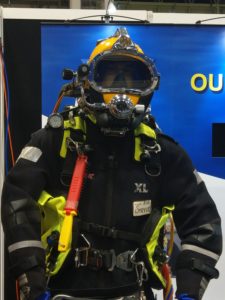
In the 1930s, Guy Gilpatric (1896−1950), an American former aviator living in southern France, became a pioneer in using rubber glasses with glass lenses for diving. In the middle of this decade, the mask covering the eyes and nose (note the nose, unlike in ordinary goggles) evolved as a result of the creativity and ingenuity of many people. In 1938, Gilpatric published The Complete Goggler, the first book about amateur diving and underwater hunting, a sport that was gaining enthusiasts among amateurs. Among its readers was the French navy lieutenant Jacques Cousteau (1910−1997), one of the most well-known (if not the best-known) travelers and explorers of the underwater world. After World War II, there was a universal shortage of many things. So when in 1946 the first diving club in Great Britain was founded (The Amphibians Club in Aberdeen), its founder Ivor Howitt (1927−) modified an old civilian gas mask to meet his diving needs.
Here the stories of diving masks are intertwined with masks intended for others, for example, firefighters. Some of the early diving kits included full-face masks with a single hose (see Watanabe and Oghushi or Le Prieur). To this day, companies such as Scott and Kirby Morgan specialise in their production. They produce a breathing apparatus in this configuration for the use of fire departments.
Poland’s role in diving history
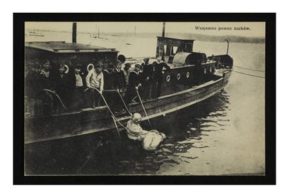
It seems that as a result of war and occupation Poland lagged behind for many years, especially in the area of inventions. When we easily find information about foreign patents for subsequent masks, cylinders, pumps and other types of diving equipment, Poland is missing from these lists. The Polish history of diving actually began in 1935, when Roman Wojtusiak (1906−1987), a researcher at the Department of Zoopsychology and Animal Ethology of the Jagiellonian University in Krakow, constructed and used a diving helmet. He attempted diving in it in 1935 first at the YMCA swimming pool in Krakow and a year later in the open waters of the Puck Bay. The official purpose of his dive was to conduct direct zoological observations of the bottom of the Puck Bay, while also testing the equipment of his own design. He published the description of his device, conducted observations and tests in the publication Diving helmet used for marine biological observation. He wrote: “About thirteen years ago, the above mentioned W. Beebe was introduced to undersea biological research at shallow depths, with simple and practical diving apparatus in the form of a helmet. This apparatus has become so popular in America that it is currently used not only for research but also as a pedagogical measure during marine biology courses.
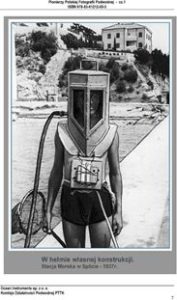
17 years later the Polish diving community made another significant step. During the first exploration of the Cold Cave (orig. Jaskinia Zimna), cave divers used a classic diving suit. The diving suit was designed and made by Tadeusz Bernhard (1925−2016) and Włodzimierz Starzecki (1926−2007). The diver was wearing a thick rubber suit, boots, and gloves. The tin diving helmet, when put on the head, was attached to the suit with screws. The air was supplied to the helmet with a rubber garden hose. The cavers stopped further attempts with this type of suit due to the diver’s low operability. It was proposed to replace it with a lighter device that would give the diver a greater degree of freedom in extreme conditions, which is why different diving apparatus has met with much great interest from the cavers.
The present times and the future
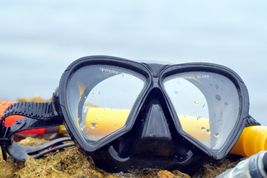
The mask is one of the most important and at the same time most personal elements of diving equipment. It gives you the unique opportunity to observe the underwater world with your own eyes. Due to the pressure prevailing underwater in this equipment element, tempered glass or high-quality composite materials are used, sometimes also covered with special coatings (e.g. anti-reflective). Thanks to the use of tempered glass, the lenses of diving masks are about four to six times harder than standard glasses, which means that in a high-pressure environment they do not break down into small and sharp pieces. Dive mask frames are available with one or two panes, and the choice between them depends entirely on the diver’s personal preferences (some believe that two panes give them a wider field of view). Diving masks can also be ordered with special corrective lenses for people with visual problems. These can be prefabricated lenses suitable for the certain mask model or lenses that can be fitted into the classic mask using a dedicated frame with the lense.
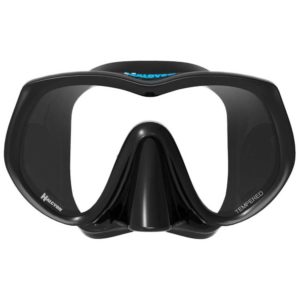
One of the suppliers of diving mask glasses is the company Schott AG, whose product UltraClear Schott Superwite™ is mounted in Venom masks from Atomic Aquatics. Considering the specific application, in addition to strength, the diver expects even more from their mask. Raw materials with a low content of iron oxide provide white to the glass, thanks to which the image they see has real colors. High smoothness and transparency, scratch resistance, low refractive index, and chemical resistance will also be appreciated.
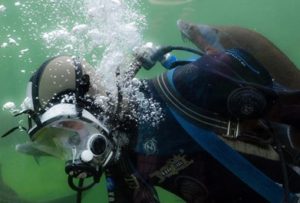
Full face masks gain some interest among technical divers. Due to the larger “usable” surface, there is the possibility of using glasses with electrically conductive coatings. This opens up many possibilities. In 2016, the US Navy conducted research and implementation works on a futuristic diving system with augmented reality, which was to increase safety and facilitate the work of divers. The new DAVD technology (Divers Augmented Vision Display) gives the possibility of displaying vital information directly on the glass surface and right in front of the diver’s face. It can be a sonar map of the bottom, text messages with dive computer readings, charts, photographs, and even movies. More data is intended to improve orientation and facilitate underwater navigation while freeing the diver’s hands as computers are most often placed on the wrists.
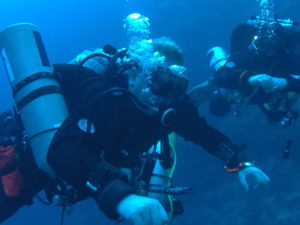 One of the largest, if not the largest international diving organisations in the world is PADI (Professional Association of Diving Instructors) with approximately 137,000 qualified members with instructor qualifications. It is estimated that 1,000,000 new scuba divers are certified annually in the world, new equipment stores are appearing, new and better computers, cameras, breathing machines are being developed. Recreational diving is becoming a multi-billion dollar industry because it is usually closely related to exotic travels.
One of the largest, if not the largest international diving organisations in the world is PADI (Professional Association of Diving Instructors) with approximately 137,000 qualified members with instructor qualifications. It is estimated that 1,000,000 new scuba divers are certified annually in the world, new equipment stores are appearing, new and better computers, cameras, breathing machines are being developed. Recreational diving is becoming a multi-billion dollar industry because it is usually closely related to exotic travels.Sources:
https://en.wikipedia.org/wiki/History_of_scuba_diving
https://en.wikipedia.org/wiki/Timeline_of_diving_technology
https://en.wikipedia.org/wiki/Diving_mask
https://marinebio.org/creatures/tools/scuba-diving/
https://www.nurkomania.pl/nurkowanie_historia_poczatki.htm
https://www.plongee-infos.com/bonjour-tout-le-monde/?fbclid=IwAR2M1LiDvs8GbWI1_JMpTEaGFNYCnijmVNDGIa2C9xMvDxrOvSppP2hjsGU
Reference list:
[1] W. R. Paton (tłum.), The Greek Anthology, Londyn 1917, vol. 3, s. 158−159, Epigram 296 (Apollonides)
[2] R. F. Marx, The History of Underwater Exploration, Mineola, New York, 1990, s. 11, ISBN 9780486264875
[3] da Vinci L., Codex Arundel, British Library, Londyn
[4] History of diving and NOAA Contributions, “The Noaa Diving Manual: Diving for Science and Technology”, National Oceanic and Atmospheric Administration, 2001, 4th edition, s. 1−4
[5] Podrazik A., Patentowa(na) historia szkła, „Szkło i Ceramika”, nr 4/2018, s. 34
[6] Wojtusiak R., Hełm nurkowy w zastosowaniu do obserwacji biologicznych morskich, „Wszechświat”, nr 4 (1747), maj 1938, s. 99−105
[7] Samsel J., Wachowski W., Pionierzy polskiej fotografii podwodnej, cz. 1, s. 7, ISBN 978-83-61212-00-3
[8] Chevallier P., Turgeon S., Sarra-Bournet C., Turcotte R., Laroche G., Characterization of Multilayer Anti-Fog Coatings, “ACS Applied Materials & Interfaces”, 2011, 3, 3, s. 750−758 (Research Article), Data publikacji (sieć): 7.03.2011, DOI: 10.1021/am1010964
This article was published also in the Polish scientific magazine “Glass and Ceramics”, no. 1/2020, p. 52−57
Absolwentka Uniwersytetu Warszawskiego. Do 2020 r. sekretarz redakcji czasopisma „Szkło i Ceramika” (ICiMB, SITPMB). Zafascynowana szkłem i ceramiką w każdym aspekcie ich powstawania i wykorzystania, w tym historycznymi technikami i technologiami wytwarzania, zdobienia i łączenia z innymi materiałami. Obecnie prowadzi własny portal Szklo-Ceramika.ONLINE i angażuje się w projekty tematyczne
An IT network engineer by profession. A passionate diver. Active diving instructor and EFR (Emergency First Response & Secondary Care) instructor. Technical diver TDI Advanced Trimix Open Circuit and X-CCR Normoxic Trimix. Closed circuit diving enthusiast.
Z zawodu inżynier sieci informatycznych. Z zamiłowania płetwonurek. Czynny instruktor nurkowania oraz instruktor EFR (Emergency First Response & Secondary Care). Nurek techniczny TDI Advanced Trimix Open Circuit i X-CCR Normoxic Trimix. Entuzjasta nurkowania na obiegu zamkniętym na X-CCR.

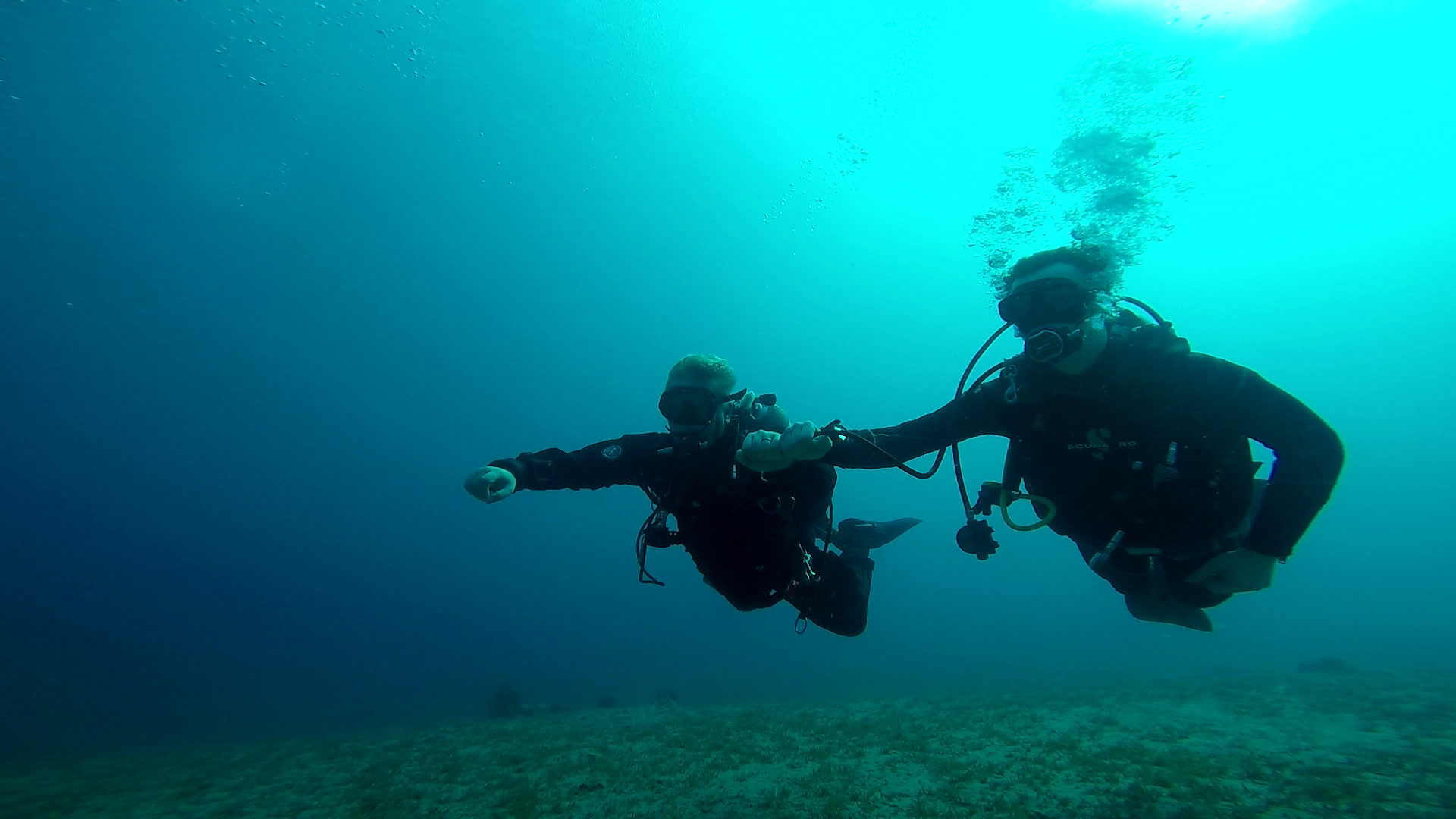


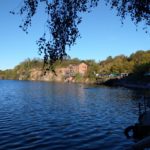
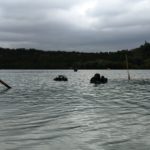
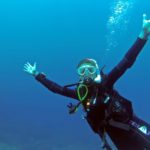

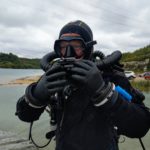
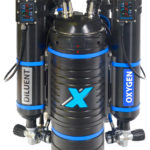
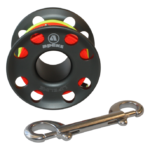
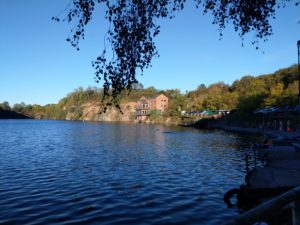
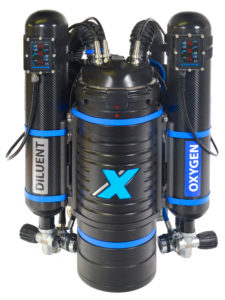
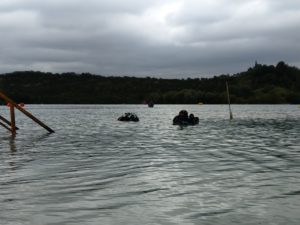
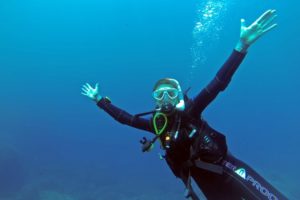
More Stories
Stoney Cove – clean water
Women diving
Vobster Quay